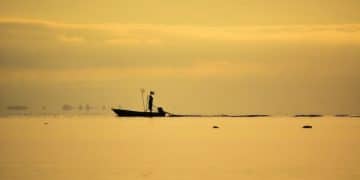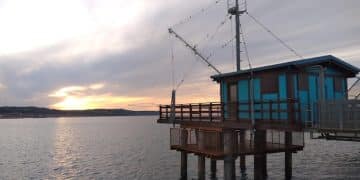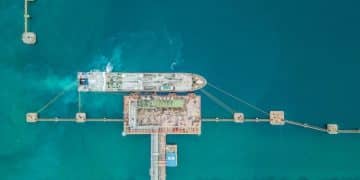Sustainable Seafood Guide: Make Informed Choices & Protect Marine Life in 2025
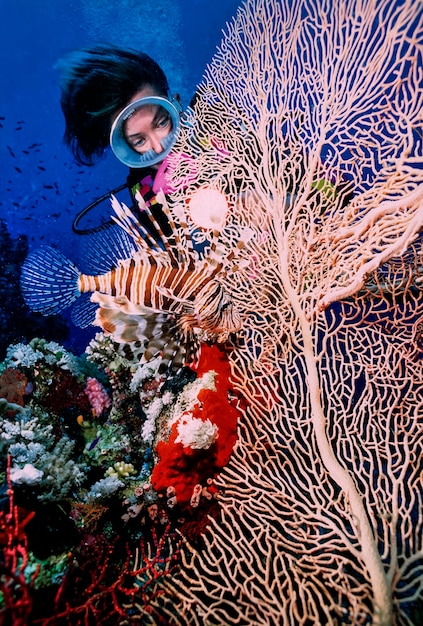
Making informed choices in seafood consumption is vital for preserving marine ecosystems and ensuring future availability of fish stocks; this Sustainable Seafood Guide: Make Informed Choices and Protect Marine Life in 2025 offers actionable insights into selecting environmentally responsible options, considering factors like fishing methods, aquaculture practices, and regional sustainability ratings.
Navigating the complex world of seafood consumption can feel daunting. As discerning consumers, our choices have a profound impact on the health of our oceans and the livelihoods of communities dependent on marine resources. This Sustainable Seafood Guide: Make Informed Choices and Protect Marine Life in 2025 is designed to empower you with the knowledge needed to select seafood that is both delicious and environmentally responsible, ensuring a thriving future for marine life.
Understanding Sustainable Seafood: Why It Matters Now More Than Ever
The concept of sustainable seafood has progressively gained prominence, moving from a niche concern to a global imperative. Our oceans, which cover over 70% of the Earth’s surface, are facing unprecedented pressures from overfishing, habitat destruction, pollution, and climate change. These interconnected threats jeopardize not only marine biodiversity but also the food security of billions of people worldwide. Choosing sustainable seafood is a direct way to mitigate these impacts, advocating for practices that maintain healthy fish populations and minimize ecological footprints.
In 2025, the urgency surrounding sustainable practices is even more acute. Scientific reports consistently highlight dwindling fish stocks and the degradation of critical marine habitats, reinforcing the need for immediate, collective action. Every purchase decision contributes to either perpetuating unsustainable practices or fostering a market that values long-term ecological balance over short-term gain.
The Current State of Global Fisheries
Globally, a significant portion of fish stocks are either overfished or fished to their maximum sustainable limits. This reality underscores the importance of tools like sustainable seafood guides, which help consumers identify species and sources that are managed responsibly. Organizations like the Marine Stewardship Council (MSC) and various regional programs provide certifications and ratings that simplify this complex landscape, offering clear indicators of sustainability.
- Overfishing: Exceeding the reproductive capacity of fish populations, leading to their decline.
- Bycatch: Unintended capture of non-target species, including marine mammals, turtles, and birds.
- Habitat Destruction: Damage to crucial marine environments like coral reefs and seagrass beds by destructive fishing gear.
By understanding these critical issues, consumers can become active participants in ocean conservation, influencing supply chains through their purchasing power. Supporting fisheries and aquaculture operations that implement sustainable methods helps to ensure that seafood remains a viable food source for generations to come, without compromising the health of our planet’s invaluable marine ecosystems.
Key Principles of Sustainable Seafood: What to Look For
Navigating the seafood counter requires more than just knowing what tastes good; it involves understanding the ethical and environmental implications behind each choice. Sustainable seafood adheres to a set of core principles designed to minimize ecological harm and promote the long-term viability of marine resources. These principles extend across various aspects, from the methods used to catch or farm fish to the overall management of marine ecosystems.
A truly sustainable approach considers the entire lifecycle and impact of seafood production. It’s about moving beyond simplistic labels to grasp the nuanced details that differentiate responsible practices from those that cause harm. As consumers, our ability to discern these factors empowers us to make choices that align with our environmental values.
Fishing Methods: A Critical Differentiator
The way fish are caught significantly impacts sustainability. Some methods are highly destructive, indiscriminately catching non-target species (bycatch) or damaging marine habitats, while others are designed to be more selective and less invasive. Identifying and supporting seafood caught using responsible methods is paramount.
- Pole-and-Line or Handline: Highly selective method, minimizing bycatch and habitat disruption. Often used for tuna and mahi-mahi.
- Trap or Pot Fishing: Targets specific species, like lobster and crab, with minimal impact on habitats. Traps can be designed to allow smaller, non-target species to escape.
- Dredges and Bottom Trawls: Generally considered unsustainable due to significant bycatch and severe damage to seafloor habitats. Avoid seafood caught with these methods whenever possible.
Understanding these distinctions helps consumers make informed decisions, prioritizing methods that reduce ecological harm. Certification labels often provide this crucial information, simplifying the decision-making process for busy shoppers.
Sustainable Aquaculture Practices
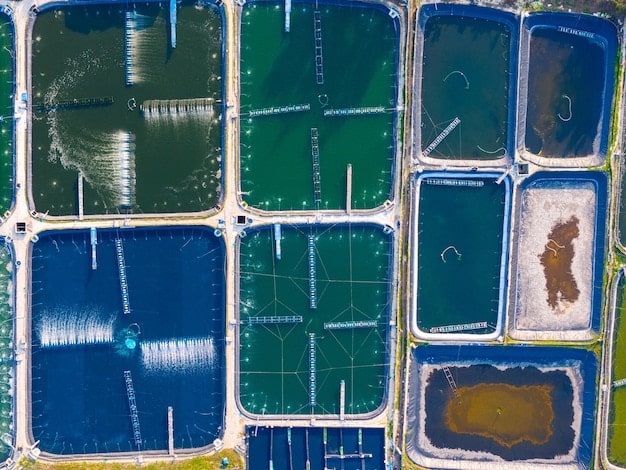
Aquaculture, or fish farming, plays an increasingly significant role in global seafood supply. While it can reduce pressure on wild stocks, not all aquaculture is created equal. Sustainable aquaculture practices focus on minimizing environmental impacts, such as pollution from waste and feed, disease transmission to wild populations, and habitat alteration. Look for farmed seafood from systems that address these concerns.
Key indicators of sustainable aquaculture include closed containment systems or those located far offshore, responsible feed ingredients that don’t rely on overfished wild fish, and strict management of waste and water quality. Certifications for farmed seafood, like those from the Aquaculture Stewardship Council (ASC), provide assurance that farms meet rigorous environmental and social standards. Choosing sustainably farmed seafood allows consumers to support practices that are both economically viable and ecologically sound.
By prioritizing seafood based on these core principles, consumers can play a powerful role in driving demand for responsible fishing and farming, ultimately contributing to healthier oceans and more resilient food systems for the future.
Top Species to Choose and Those to Avoid in 2025
Making smart seafood choices in 2025 means knowing which species are thriving and which are struggling. The dynamic nature of marine ecosystems and fishing pressures dictates that recommendations can evolve, but certain patterns of sustainability remain consistent. This guide provides a snapshot of generally recommended and generally avoided species, based on current scientific assessments and established sustainability criteria.
It’s important to remember that general recommendations can sometimes vary by region or specific fishery, so always seek the most localized and up-to-date information when possible. However, the aim here is to provide a broad understanding to help guide your selections at the market.
Recommended Sustainable Seafood Options
When seeking sustainable options, look for species that are plentiful, reproduce quickly, and are caught or farmed using environmentally responsible methods. These choices often represent a lower risk to marine ecosystems and support well-managed fisheries.
- Wild Alaskan Salmon (Sockeye, Coho, Chinook): Generally well-managed, with strong populations and often caught using selective methods like gillnets or purse seines that have lower bycatch. Its robust population and strict management make it a top choice.
- Pacific Cod (from Alaska or the Bering Sea): Managed effectively with healthy stocks. Often caught using trawl gear, but regulations ensure sustainability. A versatile and widely available white fish.
- Arctic Char (Farmed, from U.S. or Canada): A highly sustainable farmed option that thrives in closed-containment systems, minimizing environmental impact. It’s an excellent alternative to trout or salmon.
- U.S. Farmed Mussels and Oysters: These shellfish are often considered “restorative aquaculture” as they filter water, improve water quality, and create habitat. They are a low-impact and highly sustainable choice.
- U.S. Farmed Tilapia (if closed systems): While tilapia can be problematic if farmed unsustainably, U.S. farmed tilapia raised in closed, land-based recirculating aquaculture systems (RAS) is a highly sustainable option. Verify the source.
These selections generally represent choices that have received positive ratings from leading seafood sustainability organizations, ensuring you’re supporting healthy ecosystems with your purchase.
Seafood Species to Approach with Caution (or Avoid)
Conversely, some species face significant sustainability challenges due to overfishing, destructive fishing methods, or poor management practices. Choosing to avoid these helps reduce demand for unsustainable products and encourages the industry to shift towards better practices.
- Atlantic Bluefin Tuna: Severely overfished. Despite conservation efforts, populations remain at critically low levels. Avoid unless expressly verified as truly sustainable from highly regulated, limited catch fisheries, which is rare.
- Orange Roughy: A deep-sea, slow-growing species that is highly vulnerable to overfishing. Often caught using bottom trawls, which severely damage deep-sea habitats. It takes decades for populations to recover.
- Chilean Sea Bass (Patagonian Toothfish): Historically plagued by illegal fishing and overharvesting. While some fisheries are improving, it’s essential to ensure any purchase is certified sustainable (e.g., MSC certified). Otherwise, avoidance is the safest bet.
- Imported Shrimp (especially from traditional open ponds in Southeast Asia): Often associated with habitat destruction (mangrove deforestation), high bycatch, and poor labor practices. Look for ASC-certified or U.S. farmed options instead.
- European Eel: Critically endangered throughout its range. Avoid consumption as it is facing severe population declines due to habitat loss, pollution, and overfishing.
By understanding these categories, consumers are better equipped to make informed choices that contribute positively to the health and abundance of global fish stocks. Always prioritize certified options and consult up-to-date guides for the most current information.
Certification Programs and Labels: Your Trustworthy Allies
In the vast and often confusing world of seafood, certification programs and labels act as vital shortcuts, helping consumers identify products that meet specific sustainability criteria. These programs provide assurance that the seafood has been caught or farmed in an environmentally and often socially responsible manner. Understanding what these labels mean and which organizations stand behind them is crucial for making truly informed choices.
While the array of labels can sometimes be overwhelming, focusing on the most recognized and rigorously assessed ones simplifies the shopping experience. These certifications are typically based on independent audits and scientific assessments, offering a level of transparency and accountability that individual consumers cannot easily verify on their own.
Recognized Sustainability Certifications
Several organizations worldwide offer credible certifications for sustainable seafood, each with its own set of standards and focus areas. Familiarizing yourself with these key labels empowers you to confidently select sustainable options.
- Marine Stewardship Council (MSC): Perhaps the most widely recognized certification for wild-caught seafood. The blue MSC “fish tick” means the seafood comes from a fishery that has been independently certified to MSC’s science-based standard for sustainable fishing. This includes healthy fish stocks, minimized environmental impact, and effective management.
- Aquaculture Stewardship Council (ASC): The ASC works similarly for farmed seafood, providing a global standard for responsible aquaculture. The ASC label ensures that farms minimize their environmental footprint (e.g., water quality, responsible feed) and operate with social responsibility.
- Monterey Bay Aquarium Seafood Watch: While not a certification label found on packaging, Seafood Watch provides highly respected consumer guides (downloadable apps and pocket guides) that rate seafood as “Best Choice,” “Good Alternative,” or “Avoid.” Their recommendations are based on extensive research and are continuously updated. Many retailers use these ratings to inform their sourcing.
These organizations provide transparency and accountability within the seafood industry, making it easier for consumers to support responsible practices. Opting for products with these certifications is a proactive step towards promoting healthier oceans and sustainable fishing practices globally.
Beyond the Label: Asking the Right Questions
Even with certifications, being an informed consumer involves asking questions. Not all seafood will carry a specific label, especially from smaller, local operations. In such cases, direct inquiry can provide valuable insights into the product’s origin and sustainability. When at a fish counter or restaurant, don’t hesitate to ask:
- “Where did this fish come from?” Knowing the geographic origin can help you cross-reference with regional sustainability guides.
- “How was it caught or farmed?” Understanding the method helps you avoid highly destructive practices.
- “Is this wild-caught or farmed, and what are their sustainability practices?” This opens a conversation about specific fishery management or aquaculture methods.
Being an engaged consumer, even without a label, pushes retailers and restaurants to be more transparent about their sourcing. This collective demand for information ultimately contributes to greater accountability across the entire supply chain, fostering a more sustainable seafood market for everyone.
Regional Guides and Local Choices: Tailoring Your Approach
While global certification programs provide a broad framework for sustainable seafood, the most impactful choices often involve understanding regional specificities. Marine ecosystems vary significantly, and what constitutes a sustainable choice in one part of the world might not hold true elsewhere. This emphasizes the importance of consulting regional guides and prioritizing local markets, where direct knowledge of fishing practices and stock health can be more readily available.
In 2025, the trend towards hyper-local sourcing is gaining momentum, offering consumers unparalleled transparency and freshness. Engaging with local fishermen, farmers, and seafood purveyors not only supports community economies but also provides direct insights into the sustainability of their operations, often surpassing the information conveyed by generic labels.
The Value of Local Seafood Markets
Buying directly from local fishermen or at community-supported fisheries (CSFs) offers several advantages. These channels often provide seasonal, fresh catches from well-managed local stocks, minimizing the environmental impact associated with long-distance transportation and complex supply chains. Local fishermen often have a vested interest in maintaining the health of their regional waters, making them reliable sources of sustainable seafood.
When you visit a local market or purchase from a CSF, you have the opportunity to engage directly with the people who harvested your seafood. This personal connection allows you to ask specific questions about fishing methods, catch locations, and whether they adhere to local conservation efforts or best practices. This direct interaction builds trust and ensures you’re making the most informed and sustainable choice possible.
Utilizing Regional Seafood Guides
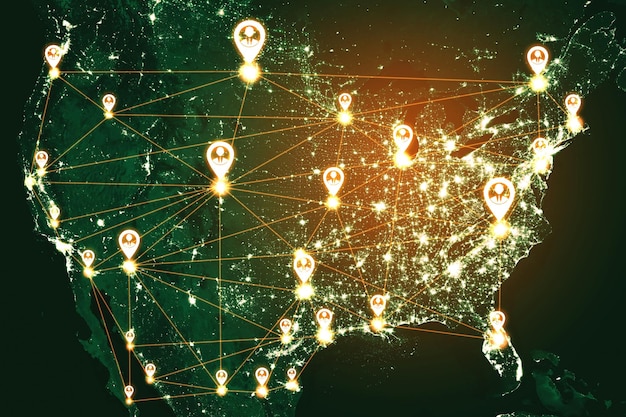
Organizations like the Monterey Bay Aquarium Seafood Watch, alongside numerous regional environmental groups, publish detailed guides specific to local fish populations and fishing methods. These guides often categorize seafood by region, providing nuanced recommendations that account for local stock health, specific management regulations, and common fishing gear types used in that area. For instance, the sustainability of a particular species of snapper can vary widely between the Gulf of Mexico and the Atlantic coast.
These guides are regularly updated, reflecting the most current scientific data and conservation efforts. Before shopping, take a moment to consult a regional guide relevant to your location. Many are available as mobile apps or printable pocket guides, making them incredibly convenient for on-the-go decision-making. By incorporating regional knowledge into your purchasing habits, you are not just buying seafood; you are investing in the health of your local marine ecosystems and supporting community-based sustainable practices.
Embracing a regional and local approach to seafood consumption ensures that your choices are not only sustainable but also reflective of the unique ecological context of your area, contributing to the resilience of marine life closest to home.
Addressing Common Misconceptions About Sustainable Seafood
The journey towards sustainable seafood is often clouded by various misconceptions. Many believe that sustainable seafood is always more expensive, less accessible, or simply too complicated to understand. These myths can deter individuals from making environmentally responsible choices, perpetuating unsustainable practices. Addressing these common misunderstandings is crucial for empowering more consumers to embrace sustainable options.
Sustainability in seafood is not an insurmountable challenge but an evolving landscape where informed decisions can make a significant difference. By debunking these myths, we can foster a more accurate understanding and encourage broader participation in ocean conservation efforts.
“Sustainable Seafood is Always More Expensive”
This is a pervasive myth. While some highly sought-after sustainable species might carry a premium, many are competitively priced, especially when seasonal and locally sourced. Often, the price difference for certified sustainable options is minimal or negligible, particularly when considering the long-term environmental and social benefits. Furthermore, less popular, but equally delicious and sustainable, species can be very affordable alternatives to overfished favorites.
For example, choosing sustainable farmed mussels or abundant species like mackerel or sardines can be far more economical than opting for overfished tuna or cod. The cost also reflects the investment made in responsible fishing practices, which may involve more selective gear or stringent monitoring. Viewing it as an investment in our planet’s future rather than just a commodity shifts the perspective on its perceived cost.
“It’s Too Complicated to Figure Out”
The array of certifications and species can indeed seem daunting at first glance. However, resources like the Monterey Bay Aquarium Seafood Watch app, regional guides, and even simple online searches make it incredibly easy to quickly check the sustainability status of almost any seafood item. Many major grocery chains also label their seafood with sustainability information, often displaying MSC or ASC logos prominently.
Small, incremental changes in purchasing habits can make a big difference. Starting with just a few commonly purchased species and then gradually expanding your knowledge diminishes the perceived complexity. Sustainability is a journey, not a destination, and every informed choice simplifies the process over time.
“My Individual Choice Doesn’t Matter”
This sentiment is perhaps the most dangerous misconception. Every single purchase decision, when aggregated with those of millions of other consumers, sends a powerful signal to the market. When demand shifts towards sustainable options, retailers and suppliers respond by sourcing more responsibly. This collective consumer power drives positive change throughout the entire seafood supply chain.
Beyond direct purchasing, individual choices matter because they inspire others. Sharing knowledge with friends and family, advocating for sustainable options in local restaurants, and participating in discussions about ocean health all amplify the impact of personal decisions. Your individual choice is a ripple in a much larger wave of environmental advocacy that is vital for protecting marine life.
By dispelling these common myths, we can collectively empower more people to become active participants in the sustainable seafood movement, contributing to healthier oceans and a more secure food future for 2025 and beyond.
Looking Ahead: Innovations and Future Outlook for Sustainable Seafood
The landscape of sustainable seafood is not static; it is a dynamic field continually evolving with scientific advancements, technological innovations, and shifts in consumer demand. As we look towards 2025 and beyond, several promising developments are set to further enhance our ability to make informed choices and protect marine life. These innovations span from cutting-edge aquaculture techniques to sophisticated monitoring systems for wild fisheries, all aimed at fostering a more resilient and responsible seafood supply.
The convergence of consumer awareness, policy action, and technological breakthroughs offers a hopeful vision for the future of our oceans. Understanding these emerging trends can empower us to advocate for and support the most impactful advancements in seafood sustainability.
Advancements in Aquaculture Technology
Aquaculture is poised for significant breakthroughs, moving beyond traditional open-net pens that often raise environmental concerns. Innovations are focusing on closed-containment systems, such as Recirculating Aquaculture Systems (RAS) on land, and advanced offshore aquaculture. These systems offer unparalleled control over water quality, waste management, and disease prevention, significantly reducing environmental impact.
Furthermore, research into sustainable feed alternatives is critical. Developers are exploring ingredients like insect meal, algae, and microbial proteins to reduce reliance on wild-caught fish for feed, which has historically been a major sustainability challenge in aquaculture. As these technologies become more scalable and economically viable, they will play a crucial role in meeting global seafood demand without depleting wild stocks.
Traceability and Blockchain Technology
Ensuring that seafood is truly sourced sustainably requires robust traceability throughout the supply chain. From the point of catch or farm to the consumer’s plate, knowing the origin and journey of seafood is vital. Blockchain technology offers a powerful solution, creating an immutable and transparent record of every transaction and step in the supply chain.
This enhanced traceability helps combat illegal, unreported, and unregulated (IUU) fishing, which undermines conservation efforts and fair market practices. By providing consumers with detailed information about their seafood’s journey, from the specific boat and fishing area to processing and distribution, blockchain systems build trust and empower consumers to verify sustainability claims directly. Expect to see more seafood products incorporating scannable QR codes linked to blockchain data in the coming years.
Evolving Consumer Behavior and Policy Support
The biggest driver for future sustainability will continue to be informed consumer demand. As awareness grows, more individuals are actively seeking out sustainable options, pressuring retailers and restaurants to adjust their sourcing. This bottom-up pressure, combined with evolving governmental policies and international agreements on fisheries management and marine protected areas, creates a powerful synergy for positive change.
In 2025, we anticipate stronger policy frameworks supporting sustainable fishing quotas, tighter regulations on bycatch, and increased investment in marine conservation. Collective action, from individual shopping habits to global policy initiatives, will shape the future of our marine resources. By staying informed and engaged, we can all contribute to a future where seafood is abundant, healthy, and consumed responsibly, ensuring the vitality of our oceans for generations to come.
| Key Point | Brief Description |
|---|---|
| 🐠 Informed Choices | Understanding fishing methods and aquaculture practices is crucial for sustainable seafood. |
| 📜 Certifications | Look for MSC and ASC labels to identify reliably sourced sustainable seafood. |
| 🗺️ Regional Guides | Utilize local guides like Seafood Watch for specific, up-to-date recommendations. |
| 💡 Future Trends | Innovative aquaculture and enhanced traceability systems are shaping future sustainability. |
Frequently Asked Questions About Sustainable Seafood
▼
Sustainable seafood refers to fish or shellfish caught or farmed in ways that ensure the long-term health and vitality of marine ecosystems. This includes maintaining healthy fish populations, minimizing environmental impact, and respecting habitat and biodiversity. It also often considers social and economic factors for fishing communities.
▼
Not necessarily. While some premium sustainable options might cost more, many are competitively priced, especially if they are seasonal or locally sourced. Often, the increased cost reflects the investment in better, more responsible practices. Exploring less common but sustainable species can also be budget-friendly choices.
▼
Look for recognized certification labels like the MSC (Marine Stewardship Council) for wild-caught fish or ASC (Aquaculture Stewardship Council) for farmed fish. Additionally, use resources like the Monterey Bay Aquarium Seafood Watch app, which provides up-to-date regional recommendations for “Best Choices,” “Good Alternatives,” and “Avoid” options.
▼
Sustainable wild-caught seafood means populations are healthy and fishing methods minimize ecosystem harm. Sustainable farmed seafood (aquaculture) focuses on practices that limit pollution, disease transmission, and habitat alteration. Both can be good choices depending on specific methods and management, with certifications guiding responsible selections.
▼
Absolutely. Every purchase decision contributes to market demand. When consumers consistently choose sustainable seafood, it signals to retailers and suppliers that there’s a strong preference for responsibly sourced products. This collective demand drives widespread positive change across the industry, supporting healthier oceans and sustainable livelihoods globally.
Conclusion
As we navigate toward 2025 and beyond, the imperative to make informed seafood choices becomes increasingly clear. This guide has aimed to demystify sustainable seafood, providing actionable insights into understanding its principles, recognizing reputable certifications, and leveraging regional knowledge. Our buying habits possess significant power to shape the future of our oceans. By committing to sustainable seafood, we not only secure a vital food source for generations to come but also actively participate in preserving the health and biodiversity of marine life. Let every meal be a conscious step towards a healthier planet.
